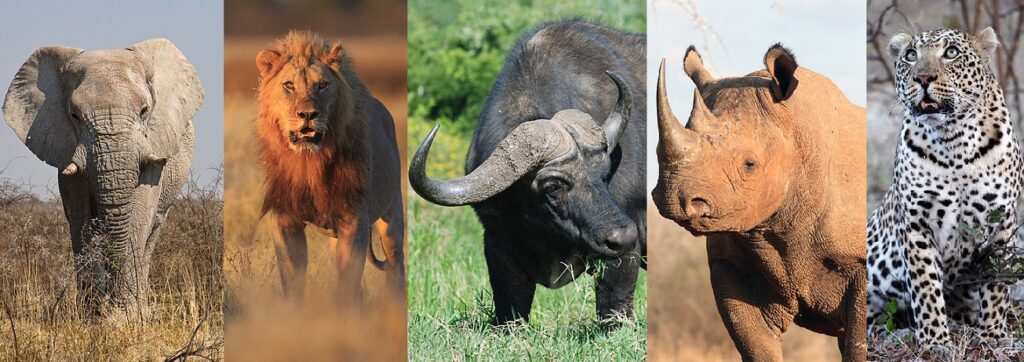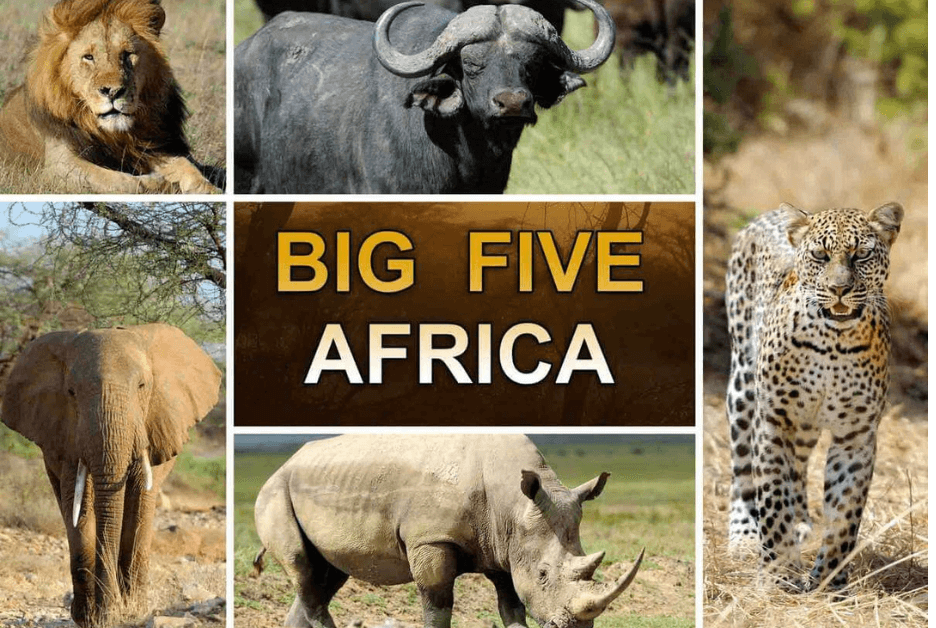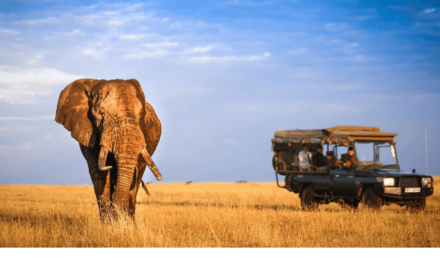An African safari is one of the most thrilling and awe-inspiring adventures one can undertake. The diverse landscapes, breathtaking sunsets, and rich wildlife offer an unparalleled experience. Among the plethora of animals roaming the African wilderness, the “Big Five” stand out as the most iconic and sought-after species to encounter. Originally a term coined by big-game hunters to describe the five most challenging animals to hunt on foot, the Big Five have become a symbol of African wildlife conservation and a must-see for safari-goers. This blog delves into these majestic creatures, where to find them, and why they captivate the hearts of millions.
The Big Five Animals
The Big Five includes the lion, leopard, elephant, rhinoceros, and Cape buffalo. Each of these animals is unique in its behavior, habitat, and contribution to the ecosystem. Let’s explore each member of this legendary group, but first why are they called the Big Five? The big five got their fame because they were the most sought-after hunting trophies. In other words, the big five were the most dangerous animals in Africa to hunt. They’re very difficult to maneuver around and are highly unpredictable. More importantly, these five are the only animals that charge and fight back against their hunters.

1. Lion
Known as the “King of the Jungle,” lions are perhaps the most iconic animals in Africa. Their majestic manes, fierce hunting prowess, and social dynamics make them a favorite among safari enthusiasts. Lions live in groups called prides, consisting of a dominant male, several females, and their cubs. Observing a pride’s interactions—from playful cubs to the coordinated hunting tactics of lionesses—is a highlight of any safari.
Best Places to See Lions:
- Serengeti National Park, Tanzania: Famous for its vast savannas and the annual wildebeest migration.
- Masai Mara National Reserve, Kenya: Renowned for its high lion population and dramatic hunting scenes.
- Kruger National Park, South Africa: Offers excellent opportunities for lion sightings year-round.
2. Leopard
Leopards are elusive and solitary big cats, known for their incredible stealth and adaptability. They are excellent climbers and often drag their prey up into trees to protect it from scavengers. Spotting a leopard requires patience and a keen eye, as they blend seamlessly into their surroundings.
Best Places to See Leopards:
- South Luangwa National Park, Zambia: Often referred to as the leopard capital of the world.
- Okavango Delta, Botswana: Dense vegetation provides the perfect environment for these secretive cats.
- Sabi Sand Game Reserve, South Africa: Renowned for its reliable leopard sightings.
3. Elephant
The African elephant is the largest land animal on Earth, weighing up to 6 tons. These gentle giants are highly intelligent, with strong social bonds and intricate communication methods. Watching a herd of elephants interact—from playful calves to the matriarch guiding her group—is a mesmerizing experience.
Best Places to See Elephants:
- Chobe National Park, Botswana: Home to one of the largest elephant populations in Africa.
- Amboseli National Park, Kenya: Offers stunning views of elephants with Mount Kilimanjaro as a backdrop.
- Addo Elephant National Park, South Africa: Famous for its dense elephant population and close encounters.
4. Rhinoceros
African rhinos are divided into two species: the black rhino and the white rhino. Both are critically endangered due to poaching and habitat loss. Black rhinos are known for their solitary and aggressive nature, while white rhinos are more social and often seen grazing in groups.
Best Places to See Rhinos:
- Hluhluwe-Imfolozi Park, South Africa: Renowned for its rhino conservation efforts.
- Etosha National Park, Namibia: Provides excellent opportunities to see both black and white rhinos.
- Lake Nakuru National Park, Kenya: Famous for its white rhino population and scenic landscapes.
5. Cape Buffalo
Often underestimated, Cape buffaloes are among the most dangerous animals in Africa due to their unpredictable nature. These large bovines are incredibly strong and are known to defend themselves fiercely against predators. They are social animals, often seen in herds that can number in the hundreds.
Best Places to See Cape Buffalo:
- Kruger National Park, South Africa: Large herds can be found grazing across the savannas.
- Serengeti National Park, Tanzania: Often seen in mixed herds with wildebeests and zebras.
- South Luangwa National Park, Zambia: Known for its massive buffalo herds.
Conservation Efforts for the Big Five
The Big Five face numerous threats, including habitat loss, poaching, and human-wildlife conflict. Conservation organizations and local governments are working tirelessly to protect these animals and their habitats. Efforts include anti-poaching patrols, community-based conservation programs, and the establishment of protected areas. Visiting national parks and reserves supports these initiatives by providing funding and raising awareness about the importance of wildlife preservation.
Tips for Spotting the Big Five on Safari
- Choose the Right Destination: Research parks and reserves known for their Big Five populations. Guided tours often increase the chances of sightings.
- Be Patient and Observant: Wildlife doesn’t operate on a schedule. Spend time in one spot and use binoculars to scan the area.
- Listen to Your Guide: Safari guides have extensive knowledge of animal behavior and can lead you to the best locations.
- Go on Game Drives at Dawn and Dusk: Many animals, including the Big Five, are most active during these times.
- Respect Wildlife: Keep a safe distance, avoid loud noises, and never feed or provoke animals.
Beyond the Big Five
While the Big Five are undeniably captivating, Africa’s wildlife diversity extends far beyond these iconic animals. Giraffes, zebras, cheetahs, hippos, and countless bird species add to the magic of a safari. Taking time to appreciate the entire ecosystem enriches the experience and fosters a deeper connection to nature.
Final Thoughts
Encountering the Big Five on an African safari is a once-in-a-lifetime experience that leaves visitors with a profound appreciation for wildlife and nature. These animals symbolize the untamed beauty of Africa and the importance of conservation. Whether you’re a seasoned traveler or embarking on your first safari, the Big Five offer memories that will last a lifetime. So pack your camera, embrace the adventure, and prepare to be awed by the wonders of the African wilderness.



